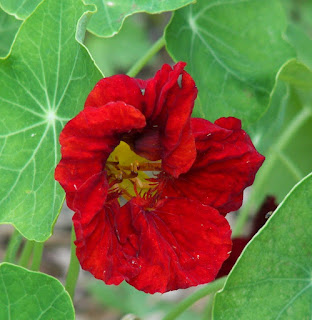The Marcels - Blue Moon
www.youtube.comDal Cd : " Best Hits Of 50's & 60's "
August 12 and August 31, 2012 have full moons. The 2nd full moon is called a "Blue Moon". The next Blue Moon will be July 2015.
Don't you just love it when there's a really cool old song to go with a story topic? And really - you know I was around the first time this song was popular because I said "cool".
I've been watching a "cool" little facebook page called "Tropical Update" and it's covering Issac as it turns into a category 1 hurricane. Someone - somewhere - started this page and it allows others to post photos and comments as the storm arrives. Since you've already surmised I'm a weather junky, it's no wonder I've liked this page. It's fascinating and a little creepy all in one.
Since the wind and rain from this weather system won't get to our area until Saturday, today was perfect for yard work. Things have looked so less than ideal I've had a real lack of ambition. I was able to trim, clean, wash and tidy up most of the back yard. Not a bad bit of work. I'm holding on to the hope it will last until the first frost. I know - I know but I can dream.
NASA says the moon Friday night is likely to be more red than blue due to the many fires over the US. At any rate, step outside August 31, face east at sunset and you can sing along with me:
"Bom ba ba bom ba bom ba bom bom
bom ba ba bom ba bom ba bom bom
bom ba ba bom ba bom ba bom bom
Dang dang dang
Ding dong ding
Blue moon, moon, moon, moon, moon
Di, Di, Di, Di, Di, moon, moon, moon, blue moon
Di, Di, Di, Di,Di
Blue Moon, you saw me standing alone
Without a dream in my heart
Without a love of my own
Blue Moon, you knew just what I was there for
You heard me saying a prayer for
Someone I really could care for do wah wah wah
And then there suddenly appeared before me
The only one my arms will ever hold
I heard somebody whisper, "Please adore me"
And when I looked, the moon had turned to gold
OOOOOOOOOOOOOOOOOOOOOOhhhhhhhhhhh
Blue Moon, now I'm no longer alone
Without a dream in my heart
Without a love of my own"
Blue moon, moon, moon, moon, moon
Di, Di, Di, Di, Di, moon, moon, moon, blue moon
Di, Di, Di, Di,Di
Blue Moon, you saw me standing alone
Without a dream in my heart
Without a love of my own
Blue Moon, you knew just what I was there for
You heard me saying a prayer for
Someone I really could care for do wah wah wah
And then there suddenly appeared before me
The only one my arms will ever hold
I heard somebody whisper, "Please adore me"
And when I looked, the moon had turned to gold
OOOOOOOOOOOOOOOOOOOOOOhhhhhhhhhhh
Blue Moon, now I'm no longer alone
Without a dream in my heart
Without a love of my own"
And if you can sing all the bom and ding and dangs just right - you're my kind of 50's cool! There is a whole passel of folks who do the un bom, ding, dang version - beautiful but tonight I need the Marcells.


.JPG)

.JPG)
.JPG)
.JPG)




.JPG)
.JPG)



.JPG)
.JPG)
.JPG)
.JPG)
.JPG)
.JPG)
.JPG)
+-+Copy.JPG)
.JPG)


.JPG)
.JPG)


